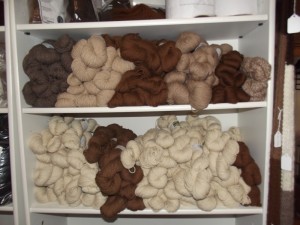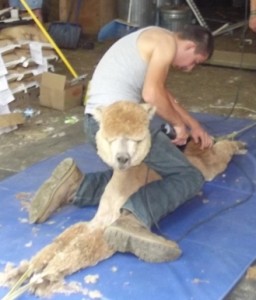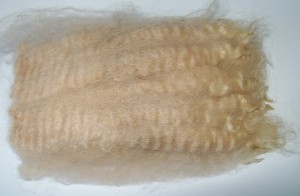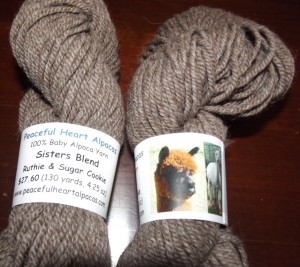Virginia Grown Alpaca Yarns
Our alpaca yarns from our 2012 shearing have now arrived! You can see them online and in the store! These all natural, undyed, 100% alpaca yarns come from our herd of alpacas raised on the Blue Ridge Parkway in Virginia. We start with a careful breeding program by selecting breeding combinations that will give us the finest and most dense fiber. Examples of the success of our breeding program are seen in Reserve Color Champion Peaceful Heart’s Lord Tennyson and his beautiful offspring.
We shear our alpacas each May, and invite people to come observe. As David has gotten older, he has become our primary shearer, and now shears for other alpaca farms in the area. The shearing method we use focuses on maximizing the quantity of useable fiber off each alpaca and keeping the three sections of fiber (blanket, neck, and legs/belly) separate as we shear.
Once the fiber is off the alpaca, I sort it by color and fineness to create the best yarns possible. Alpaca fiber is sorted by the fineness of the fiber, which is measured in microns. We test a sample from all our alpaca blankets to confirm the fiber diameter for each. For reference, human hair is approximately 100 microns thick. Alpacas have been bred for their fine fiber since they were first domesticated by the Incas. The fineness of the alpaca fiber is what makes it so soft and comfortable to the skin. Alpaca fiber and yarn is named by the thickness of the fibers that make up that yarn. Baby alpaca yarn is a great example, because it can be made from the fiber of any alpaca with fiber under 23 microns, no matter what their age is. We have several alpacas up to six years of age that produce beautiful baby alpaca yarn (or finer) each year. The list below is a guideline for classifying the fibers, and how it relates to the yarn we make.
Classification of Fiber in Microns
- Grade 1: Royal Baby Alpaca Yarn: <20
- Grade 2: Baby Alpaca Yarn: 20-22.9
- Grade 3: Superfine Alpaca Yarn: 23 – 25.9
- Grade 4: Fine Alpaca Yarn: 26 – 28.9
- Grade 5: Medium Alpaca Yarn: 29-31.9
- Grade 6: Strong Alpaca Yarn: 32-35
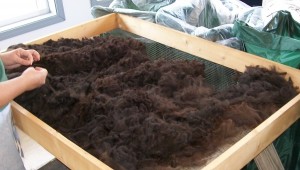
Sorting fiber from Temeraire's blanket (the baskets in the background hold the different grades of fiber as I sort)
You can see that there is very little difference between each of the grades, and proper sorting keeps the fiber that makes up a yarn more consistent. This means that all the yarns have a lovely feel. The finer the grade of fiber and yarn, the softer it will feel, with the royal baby and baby alpaca yarns having the most luxurious feel.
After the fiber is sorted and I decide how we would like each to be processed, I send the raw and sorted fiber to the mill in Tennessee who process the fiber into beautiful alpaca yarns made in the USA from Virginia raised alpacas. This year I tried blending fibers from alpacas of two different colors that had similar fiber characteristics, such as the yarn to the left from sisters Ruthie (dark brown) and Sugar Cookie (light fawn). I like the way they turned out in heathered tones. I look forward to hearing feedback from you as you see them in the shop and work with them to create beautiful things.
These yarns are perfect for all your yarn needs including knitting, crochet and weaving. You can see our alpaca yarns at our online store or at the farm.
This year’s alpaca yarns have turned out beautifully and are all spun in soft 3 ply natural colored, yarns with an incredible feel. I hope you enjoy working with them as much as I do.
